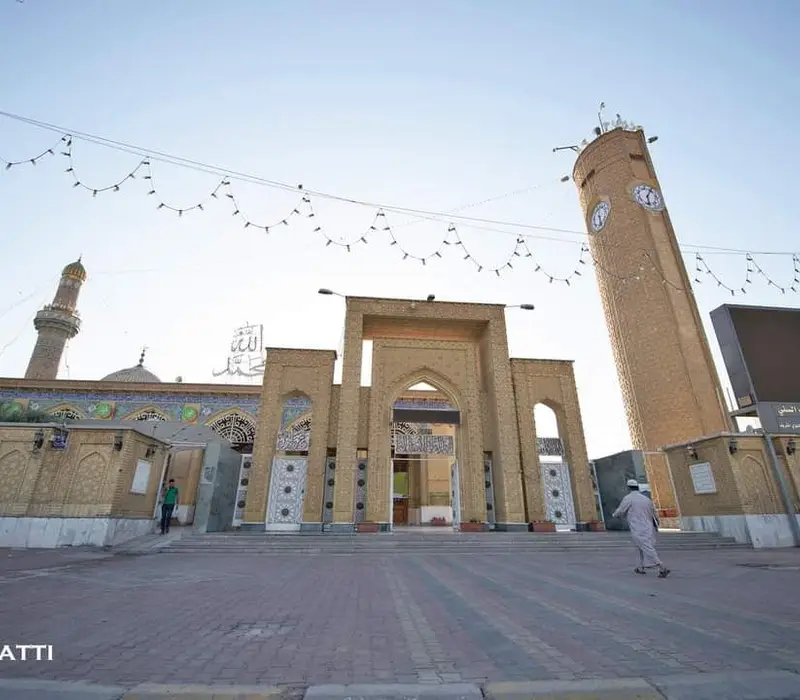Al-Imam al-Azam Mosque: A Historic Landmark in Baghdad

Al-Imam al-Azam Mosque, also known as the Abu Hanifa Mosque, is a significant historical and religious site located in the Adhamiyah district of Baghdad. This mosque and educational center commemorate Abu Hanifa al-Nu‘man, one of the greatest Islamic jurists and founders of the Hanafi school of thought. Built beside Abu Hanifa's grave in 375 AH (985 AD), the mosque has become not only a place of worship but also a renowned landmark for locals and travelers exploring Baghdad. This article delves into the rich history of the mosque, its location in Baghdad’s cultural landscape, and the significance it holds for both visitors and residents.
---
The History of Al-Imam al-Azam Mosque
Abu Hanifa al-Nu‘man, after whom the mosque is named, was born in Kufa in 699 AD and later became one of the most influential scholars in Islamic history. Known for establishing the Hanafi school of jurisprudence, his teachings spread widely across the Muslim world. Abu Hanifa passed away in Baghdad during the reign of Caliph Abu Ja‘far al-Mansur, and his tomb became a place of pilgrimage for many. The construction of the mosque in 985 AD aimed to honor his legacy and accommodate the growing number of students and followers who came to learn from his teachings.
Initially, the mosque was a small structure near Abu Hanifa’s grave, but over centuries, it was expanded and transformed into an educational center, attracting scholars and students from across the Islamic world. The structure not only served as a place of worship but also as a madrasa where religious studies flourished.
---
Location and Importance of Adhamiyah
The Al-Imam al-Azam Mosque is situated in the Adhamiyah district, which lies on the eastern bank of the Tigris River, also known as the Rusafa side of Baghdad. This neighborhood was named after Abu Hanifa, as "Adhamiyah" signifies his title, Al-Imam al-Azam (The Greatest Imam).
Directly across the river lies Kadhimiyah, another important neighborhood in Baghdad named after Imam Musa al-Kadhim, the seventh Shia Imam, whose shrine is located there. The proximity of these two districts – Adhamiyah and Kadhimiyah – represents Baghdad's diverse Islamic heritage, bringing both Sunni and Shia traditions into close contact.
Adhamiyah has long been known as a vibrant part of Baghdad, home to numerous markets, schools, and cultural centers. The mosque plays a vital role in the area’s identity and continues to serve as a symbol of Sunni Islam in Iraq. For travelers, a visit to Adhamiyah offers a glimpse into Iraq’s historical legacy, with its blend of bustling streets and peaceful religious spaces.
You can explore the location of the Al-Imam al-Azam Mosque directly through
---
Architecture and Renovations of the Mosque
The original mosque, constructed in the 10th century, was built using simple materials, reflecting the architectural styles of early Islamic buildings. Over the years, the mosque has undergone several renovations to accommodate the growing number of worshippers and students. It now features an expansive prayer hall, a large courtyard, and towering minarets that dominate the Adhamiyah skyline.
A significant renovation occurred in the Ottoman period during the 16th century when the mosque was expanded to include additional facilities for students. Later, in the 20th century, the mosque underwent further restoration efforts, including the addition of modern amenities such as libraries and lecture halls.
Today, the mosque retains elements of traditional Islamic architecture while incorporating modern features to meet the needs of its visitors. The white domes, arched entrances, and intricate geometric designs inside the mosque reflect both historical craftsmanship and contemporary functionality.
---
The Role of Al-Imam al-Azam Mosque in Baghdad's Religious Life
Throughout the centuries, Al-Imam al-Azam Mosque has been a center for religious learning and a focal point for religious ceremonies. As a madrasa, it has trained generations of scholars in the Hanafi school of thought, maintaining Baghdad’s reputation as a hub of Islamic knowledge. In addition to its educational role, the mosque has served as a place for Friday prayers, religious festivals, and community gatherings.
The mosque remains an important pilgrimage site, especially during anniversaries commemorating Abu Hanifa’s life. Worshippers gather at his tomb to pay their respects, and many consider it a place where prayers are answered. It is not uncommon to see visitors spending time near the grave, reciting verses from the Quran, or reflecting on Abu Hanifa’s contributions to Islamic jurisprudence.
---
Visiting Al-Imam al-Azam Mosque Today
For travelers visiting Iraq, the Al-Imam al-Azam Mosque offers an opportunity to explore Baghdad’s religious heritage. Visitors are welcome to join the congregation for prayers or simply explore the mosque’s peaceful surroundings. The mosque’s library, which houses rare Islamic texts, is also a point of interest for those interested in history and religious studies.
Guided tours are available for visitors who wish to learn more about the mosque’s history and architectural features. It is advisable to dress modestly when visiting the mosque and to follow local customs, especially during prayer times.
While exploring Adhamiyah, visitors can also enjoy the nearby markets and restaurants, which offer a variety of traditional Iraqi foods, including falafel, kebabs, and amba. The area’s lively atmosphere provides a contrast to the quiet serenity of the mosque, giving visitors a well-rounded experience of Baghdad’s cultural diversity.
photo of the Al-Imam al-Azam Mosque, captured through the lens of Ziad Matti
---
Cultural and Religious Significance
The Al-Imam al-Azam Mosque symbolizes Baghdad’s long-standing tradition as a center of religious tolerance and intellectual activity. Despite the challenges the city has faced over the centuries, the mosque remains a beacon of faith and learning. It stands as a reminder of the importance of Abu Hanifa’s legacy, whose teachings continue to influence Islamic jurisprudence around the world.
The mosque also serves as a symbol of unity in a city known for its religious diversity. Visitors to Baghdad, whether for spiritual or historical reasons, find in this mosque a place where they can connect with the city’s ancient past and its vibrant present.